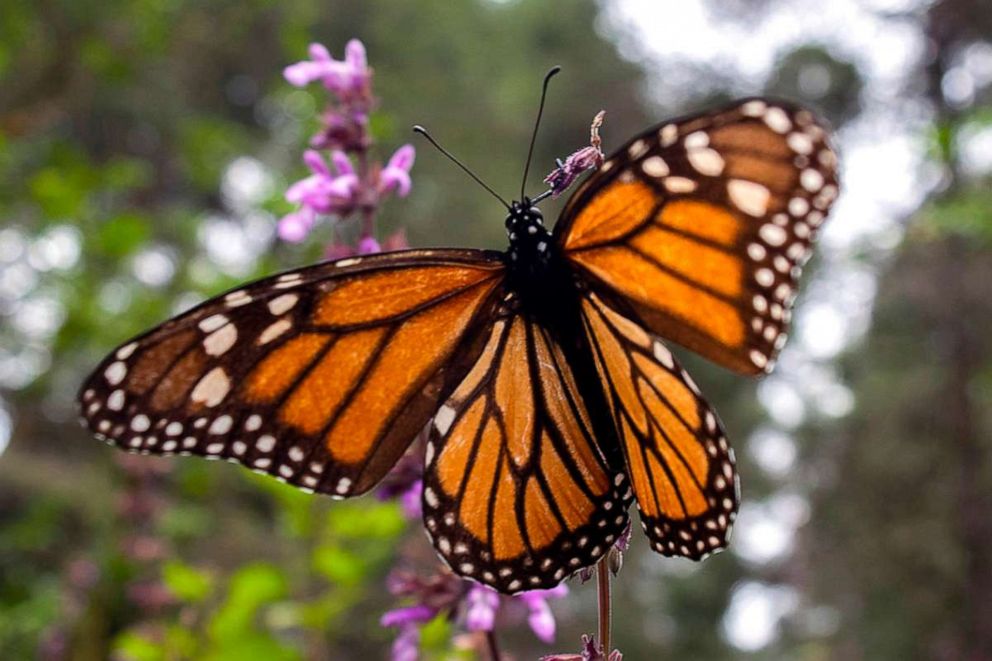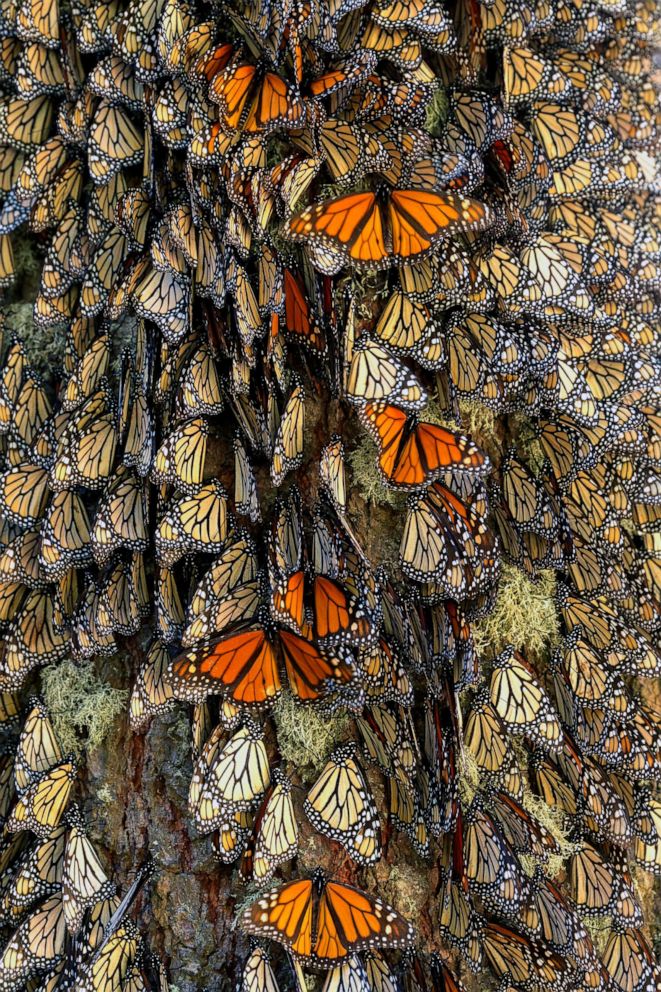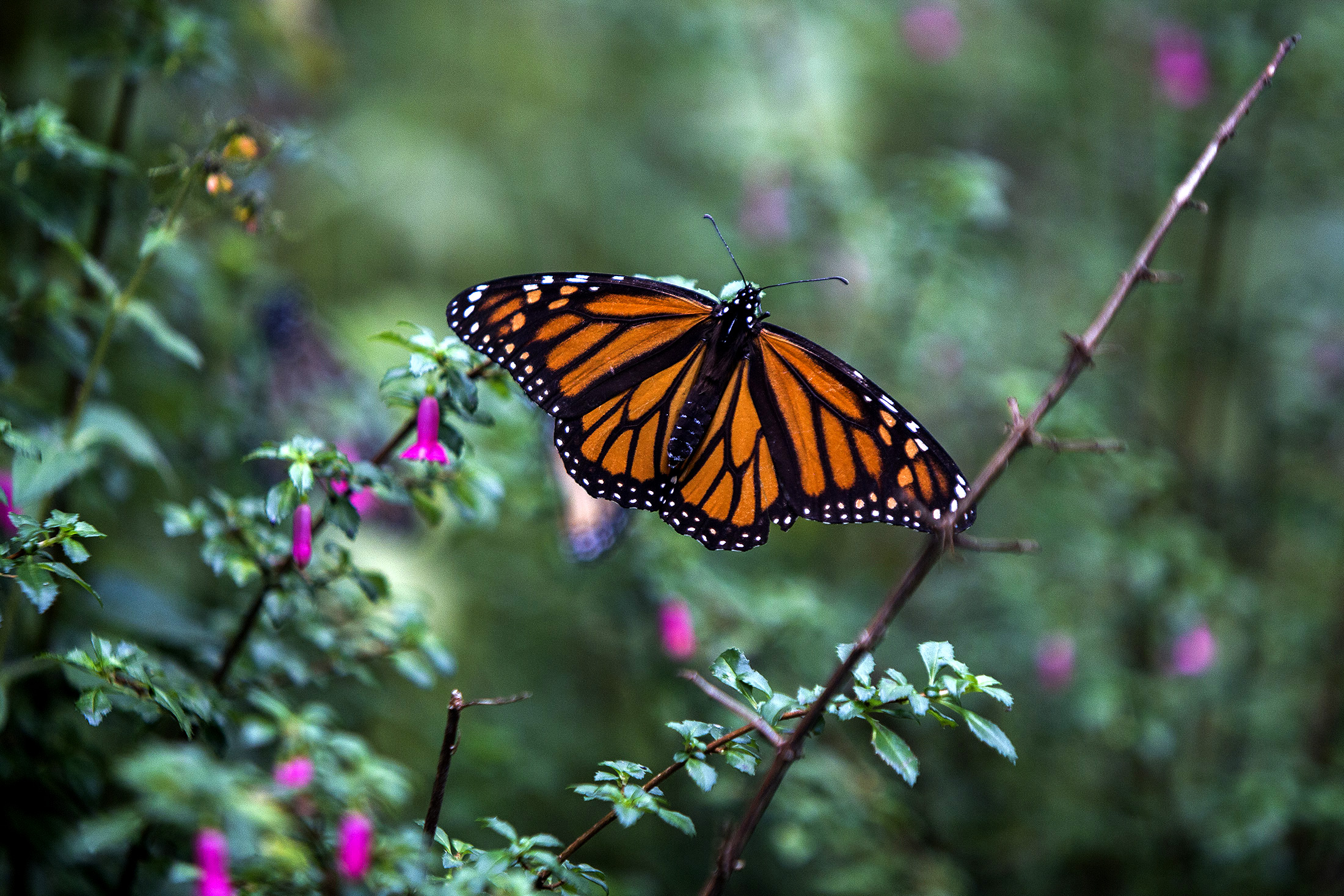Fate of monarch butterfly still hangs in the balance after endangered species decision
The U.S. Fish and Wildlife Service must focus on "higher-priority" listings.
The fate of the monarch butterfly still hangs in the balance after the U.S. Fish and Wildlife Service made a decision Tuesday on adding it to the list of threatened species under the Endangered Species Act.
The inclusion of the butterfly on the endangered species list is "warranted but precluded," according to a press release from the agency.
Under the decision, the monarch butterfly becomes a candidate for listing as an endangered species, but it will not yet be listed as the agency is prioritizing other candidates, U.S. Fish and Wildlife Service Director Aurelia Skipwith said in a statement. The butterfly's status on the list will be reviewed each year.
"We conducted an intensive, thorough review using a rigorous, transparent science-based process and found that the monarch meets listing criteria under the Endangered Species Act," Skipwith said. "However, before we can propose listing, we must focus resources on our higher-priority listing actions."

The monarch butterfly was added to the International Union for Conservation of Nature's Red List of Threatened Species in 2014 after it was determined that 90% of its population had declined from its original levels.
The beloved butterfly has died off due to increased use of farm herbicides, climate change and the destruction of milkweed plants, which is what monarch caterpillars eat and where monarch butterflies lay their eggs, the Associated Press reported.
A recent survey by the World Wildlife Fund found that the population of monarch butterflies that wintered in Mexico in the 2019-2020 season decreased 53% since the previous season.

Conservation efforts for monarch butterflies began after the populations began to decline in the mid-1990s, according to AP. While millions of the butterflies spent winters in the coastal groves of California in the 1980s, just 30,000 were counted last year.
The Fish and Wildlife Service determined that federal protections for the monarch butterfly "may be warranted" after it was petitioned to protect it in 2014 under the Endangered Species Act.
Listing the monarch butterfly as threatened would guarantee a comprehensive recovery plan and funding, Tierra Curry, senior scientist with the Center for Biological Diversity, told the AP.
For example, if the monarch is added to the list, the policy could offer incentives for non-federal property owners to implement conservation measures for species, the Fish and Wildlife Service has said. But federal protections could draw resistance from agriculture groups that fear protection rules would interfere with farm operations, according to the AP.

The Endangered Species Act, passed in 1973, protects and recovers imperiled species and the ecosystems on which they depend.
In 2019, the Trump administration changed the requirements for how the government decides to add or remove species from the list under the Endangered Species Act, altering how much habitat can be protected and limiting separate plans to protect any new species listed as threatened.
Conservation advocates said the move could make it more difficult to protect species that are threatened by human activity and climate change.




